Today, a look back at some photos from my visit to the Bird Island Nature Reserve at Lambert’s Bay on the coast of South Africa’s Western Cape Province.
Nature Reserve
The island is about 3 hectares in size, lies about 100m off the shore, and is one of only six sites in the world where Cape gannets breed (three of those sites are in South Africa whilst the remainder are in Namibia). The island is also an important breeding site for several other bird species including cormorants and, although I didn’t see any during my visit, Cape Fur Seals.
Cape Gannets
The gannets typically begin their breeding during August-September with fairly elaborate courtship and greeting behaviour involving stretching their necks and bills skyward and tapping their bills together. A mating pair will usually remain together for several seasons and produce one chick per season. Both parents are involved in incubating the egg and then feeding the chick which usually hatches after 42-46 days.
Gannets feed by plunge-diving to catch fish such as anchovies and sardines and can hit the water at speeds as high as 120 kilometres per hour dependant on the height from which they dive. As an adaption to this feeding, the birds have evolved without external nostrils on their beaks.
Environmental Status
The Cape gannet (Morus capensis) is currently classed as a “vulnerable” species. The population of Cape gannets declined sharply at the Namibian island rookeries during the second half of the 20th century whilst increasing at Lambert’s Bay. Much of this population change appears related to commercial fishing activity. The Namibian fisheries were heavily overexploited during the 1960s leading to a collapse of sardine numbers there, whilst the South African fisheries appear to have been better managed. Other threats to the birds include the removal of guano which disrupts breeding, longline fishing where birds are often unintended by-catch, oil spills, and competition for habitat from fur seals.
Suggested further reading re Cape gannets: www.birdlife.org — www.fitzpatrick.uct.ac.za/african_birdlife
Photographing Gannets
Given this is a protected area, a close approach to the birds was not possible and so all the photos shown here were taken with the 500mm super-telephoto lens both with or without a 1.4x teleconverter. Lighting conditions were fairly strong and so I used a medium aperture, F8.0, in order to get reasonable depth of field, and shutter speeds between 1/1000 and 1/2000 second to freeze the action. ISO was 400 throughout.

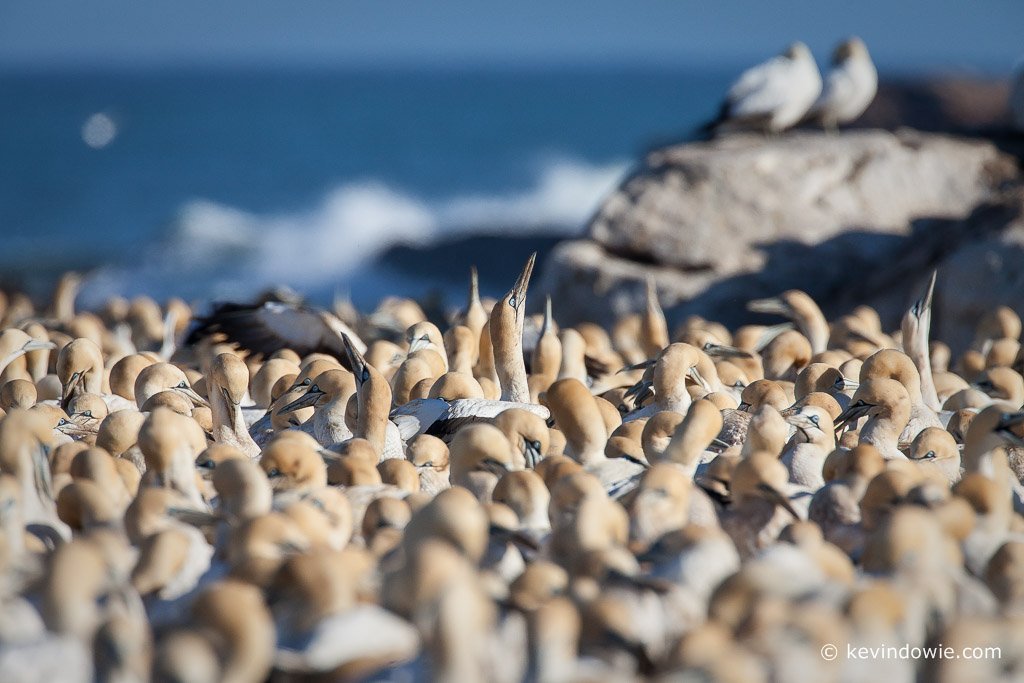
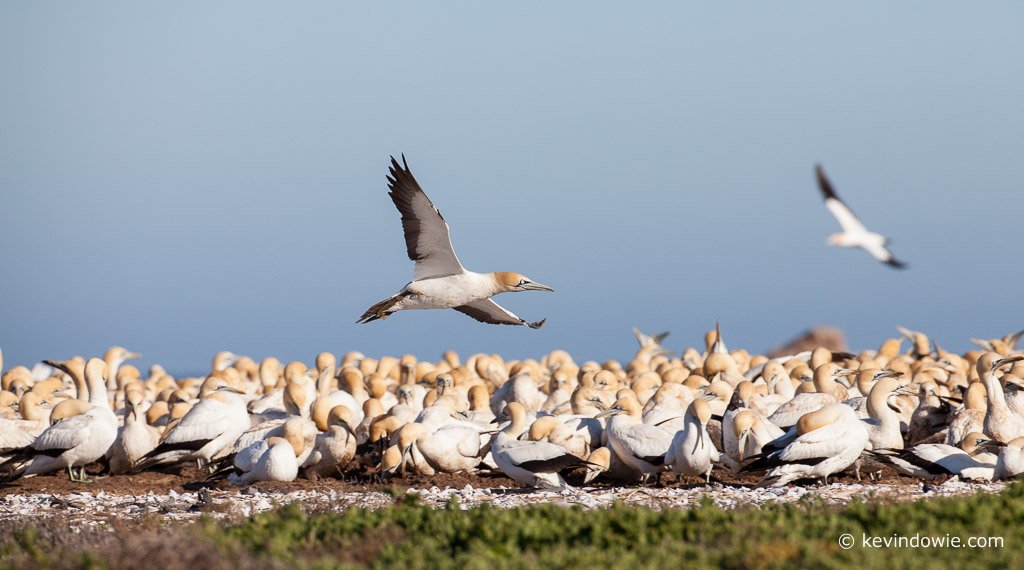
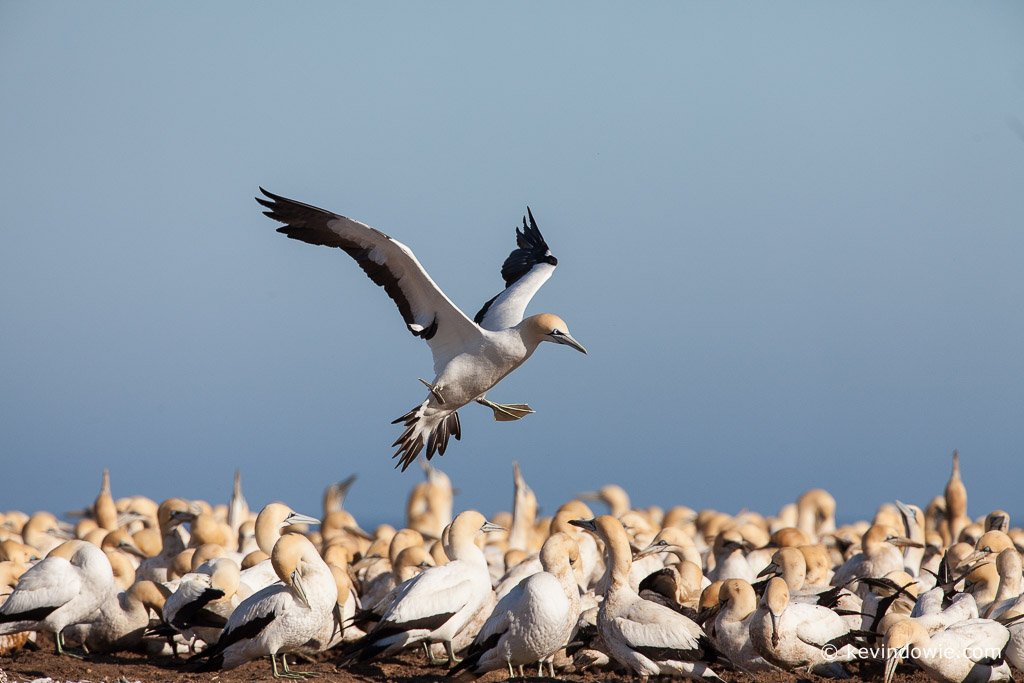
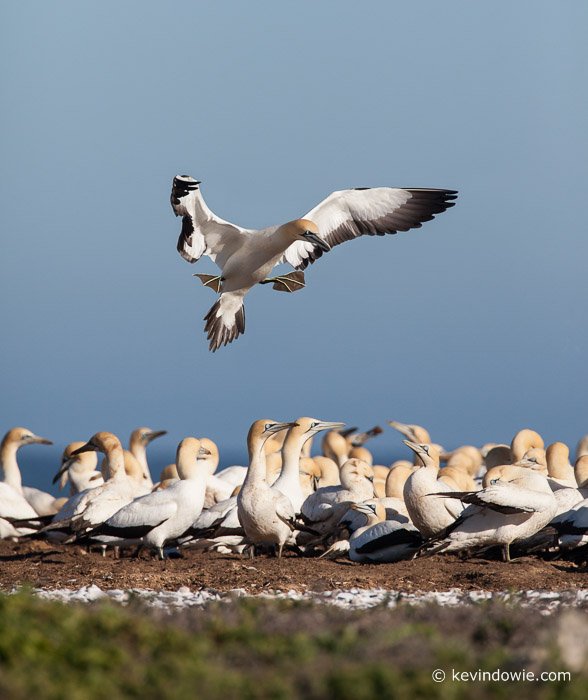

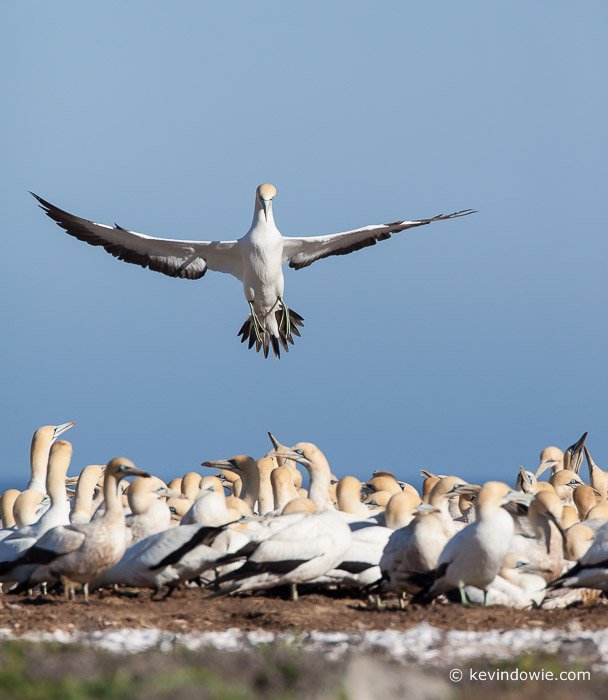
In addition to the gannets, there were some Kelp Gulls nearby as well and I couldn’t pass up the chance to get a few pictures of them. The Kelp Gull (Larus dominicanus) is a fairly common species and widely distributed. There are considered to be 5 subspecies, this one obviously being the South African or (vetula) subspecies.
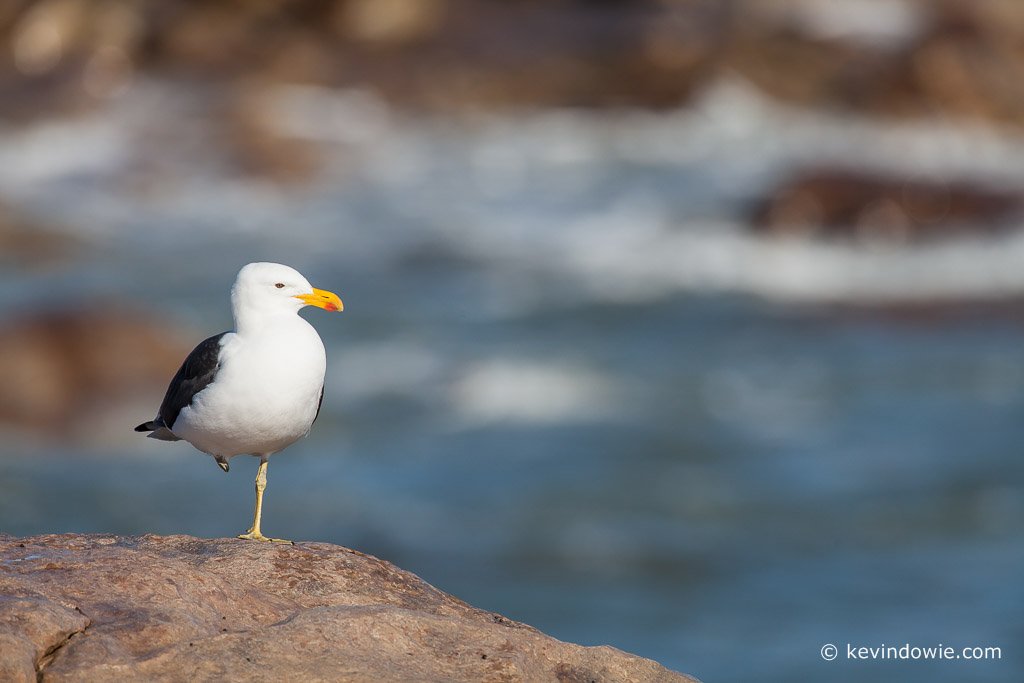


These photos are drawn from the South Africa image gallery. ~KD.
